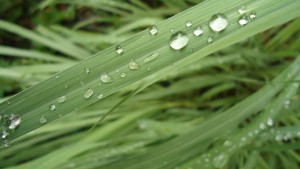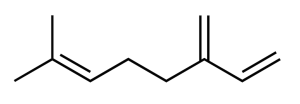— This article by Jerry Cates was first published on 23 October 2015, and revised last on 3 April 2016. © Budsinthenews Vol. 6:10(1).
—————————————–

Lemongrass (Cymbopogon citratus). Courtesy Obsidian Soul, Philippine Islands, photographed on 22 July 2011
Lemongrass is a genus of Asian, African, Australian, and tropical island plants in the grass family (Poaceae). Certain species, such as the Asian lemongrass (Cymbopogon citratus), are commonly cultivated as culinary and medicinal herbs because of their lemon-like flavor and scent.
In Asian cuisine, lemongrass is widely used as a culinary herb. In India it is also used widely as a medicinal herb. It has a strong citrus scent and flavor and can be used fresh or dried. Dried lemongrass leaves may be cut into small sections or ground into a coarse or fine powder. Lemongrass oil is also used as a pesticidal repellant, particularly with respect to mosquitoes. It is known to be lethal to certain organisms, including springtails. As a preservative, lemongrass oil has been shown to possess antifungal properties.
Though effective at repelling certain insects like mosquitoes, when used alone it can be highly attractive to honey bees, as constituents in the oil mimic those in honeybee attractant pheromones. When used in combination with certain other herbs, however, lemongrass oil is less likely to act as a honeybee attractant.
Its leaves are dried for use in brewing a flavorful/medicinal tea that has the flavor of sweetened lemon absent lemon’s sour tartness, dried and ground to a powder for use in herbal supplements that are applied topically or taken orally for specific and general health benefits. Medicinal properties long claimed for this and closely related species of lemon grass include its alleged function as an anxiolytic, hypnotic, and anticonvulsant, as well as a stimulant, sudorific, antiperiodic, anticatarrhal.
The essential oil distilled from this plant has been used as a carminative, depressant, analgesic, antipyretic, antibacterial, and antifungal agent.
Chemical analysis of the plant has shown it contains myrcene, citronella, and geranilol. Low dose studies conducted to determine how the essential oil from this plant might improve human health have been mixed, often showing no observable effects. More intensive studies demonstrate an enhancement of GABA-ergic neurotransmission through positive allosteric agonism similar to that of the benzodiazepines, though at doses too high for practical use.
Myrcene
Myrcene, or β-myrcene, is a natural, olefinic, organic, compound hydrocarbon. More precisely, it is classified as a monoterpene. Monoterpenes are dimers of isoprenoid precursors, and of those found in nature myrcene is one of the most important. It is a component of the essential oil of several plants including bay, cannabis, ylang-ylang, wild thyme, parsley, and hops. It is produced mainly semi-synthetically from myrcia, from which it gets its name. It is a key intermediate in the production of a number of fragrances. α-Myrcene is the name for the structural isomer 2-methyl-6-methylene-1,7-octadiene, which is not found in nature and is little used.
—————————————–
Taxonomy:
- Domain: Eukaryota (yew-carr-ee-OH-tah) — organisms whose cells contain a nucleus and other organelles within membranes.
- (unranked): Bikonta Cavalier-Smith, 1993 (bye-KOHN-tuh) — those eukaryotic organisms within the subgroups Apusozoa, Rhizaria, Excavata, Archaeplastida, or Chromalveolata.
- (unranked): Archaeplastida Adl et al., 2005 (ahr-kee-PLASS-tih-duh) — a major group of eukaryotes, comprised of the red algae (Rhodophyta), the green algae, and the land plants along with the freshwater unicellular algae known as glaucophytes.
- Kingdom/Regnum: Plantae Copeland, 1956 (PLAN-tee) or Viridiplantae Cavalier-Smith, 1881 (veer-id-eye-PLAN-tee) — The plant kingdom, consisting of multi-cellular green plants, i.e., whose cells have cellulose within their cell walls and have primary chloroplasts derived from endosymbiosis with cyanobacteria containing chlorophylls a and b and lack phycobilins..
- (unranked): Streptophyta Jeffrey 1967 (strepp-toh-FYE-tuh) — the land plants and the green algal group Charophyta.
- Subkingdom: Embryophyta Engler, 1892 (imm-bree-oh-FYE-tuh) — green plants, informally known as land plants because most are terrestrial rather than aquatic, while the related green algae are primarily aquatic;
- (unranked): Angiosperms (AN-gee-oh-spurms)/Magnoliophyta Cronquist (mag-NOH-lee-oh-fye-tuh) — the flowering plants, distinguished from the gymnosperms by having flowers, endosperm within the seeds, and the production of fruits that contain the seeds;
- (unranked) Monocots (MONN-oh-kotts) — a clade within the angiosperms
- (unranked) Commelinids (kumm-uh-LYNN-iddz) — a clade within the monocots
- Order: Poales Small (POH-ah-lese) — a diverse order of flowering monocots, embracing the grasses, bromeliads, and sedges; comprised of sixteen recognized families;
- Family: Poaceae Barnhart (poh-UH-suh-ee) — true grasses (excludes the seagrasses, rushes, and sedges), often referred to as the Gramineae, comprising over 10,000 wild and domesticated species, including the cereals wheat, rice, barley, maize, and millet; distinguished by having hollow stems (culms) interrupted at intervals by leaf-bearing nodes, leaves almost always alternate and distichous (in a single plane), with parallel veins; leaves differentiated into lower sheath embracing the stem and smooth margins;
- Subfamily: Panicoideae (pann-uh-COY-duh-ee) — a subfamily of true grasses that includes, among others, sugar cane, maize, and sorghum;
- Tribe: Andropogoneae Dumort. (—) — a widespread tribe of grasses found worldwide in tropical and temperate regions; commonly referred to as the sorghum tribe, the grasses included in this grouping use the NADP-malic enzyme subtype of C4 photosynthesis.
- Genus: Cymbopogon Spreng. (simm-BOH-puh-gawn) — a genus comprised of 52 recognized species of grasses widely distributed throughout Asia, Africa, and Australia, many of which contain significant amounts of volatile essential oils that, together and individually, impart a citrus, often lemon-like fragrance; these oils are often used as pesticides and preservatives, the latter being of particular utility for its hydrophilic quality, when applied to ancient palm leaf manuscripts, making them more pliable and, simultaneously, less subject to fungal decay and insect damage.
- Type Species: C. citratus (seh-TRAH-tuss) — common synonyms for this species include C. citriodorus, which, while widely used in culinary and herbal literature, is not a valid taxonomical name. C. citratus is native to the Philippine Islands, Indonesia, and southeast Asia.
—————————————–
Feel free to e-mail jerry.cates@entomobiotics.com regarding your comments on this article. You may also register, log in, and leave a detailed comment in the space provided below.
